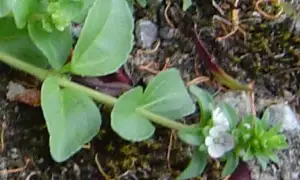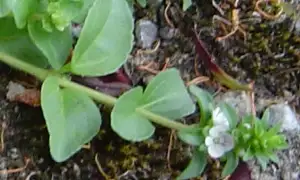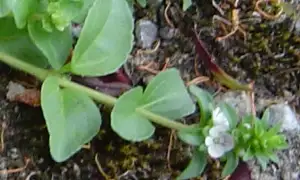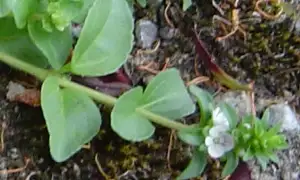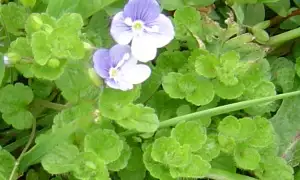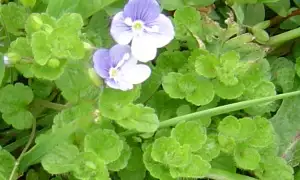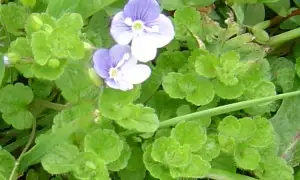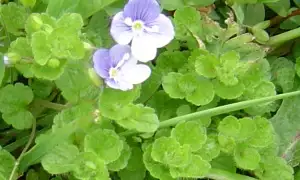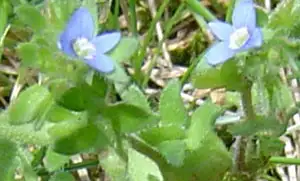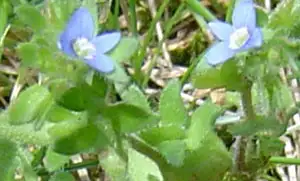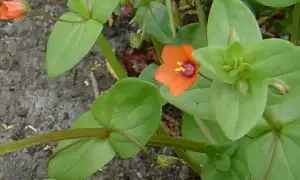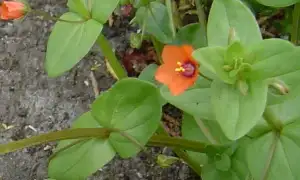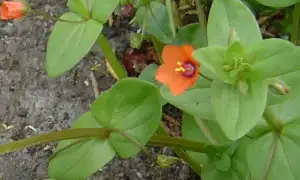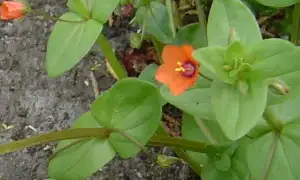Botanical name: Veronica persica
Family name: Plantaginaceae
Overview
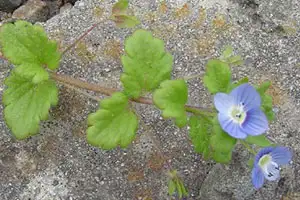
Scrambling speedwell.
This is a small annual weed that is commonly found in crops and gardens throughout the year as it can germinate in both spring and autumn.
Because it never gets very large, it seldom causes major competition problems for crops, but it can get to high densities at times and then become more of an issue, such as in a kale crop I saw recently that had large quantities of it because the herbicides used did not control it.
It is very quick to colonise bare soil, and so is an eye-sore in flower gardens if a weed-free situation is desired. Until recently, it was grouped within the Scrophulariaceae family.
Distinguishing features
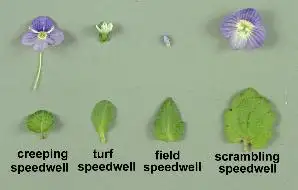
Speedwells leaf and flower comparison.
Scrambling speedwell, as suggested by its name, seldom grows upright but instead "scrambles" along the ground and over surrounding plants and objects. It is quite a hairy plant, with hairs on both the stem and leaves.
There are several weeds that look similar to scrambling speedwell, but close attention to the leaf shape can help differentiate it from some of these. Staggerweed can be confused with it, but it has a square stem, compared with the round stem of scrambling speedwell.
The flower of scrambling speedwell is quite distinctive and is only likely to be confused with other speedwell species, such as the stoloniferous perennial species creeping speedwell which causes problems in turf.
The flowers of scrambling speedwell tend to fall off very easily once the weed has been picked, seldom staying in place for students trying to press this weed. Heart-shaped pods form once the flower has matured. Field speedwell is very similar, but is a bit smaller, and the flowers are not on stalks like with scrambling speedwell. Turf speedwell has different shaped leaves and small whitish flowers.
Control
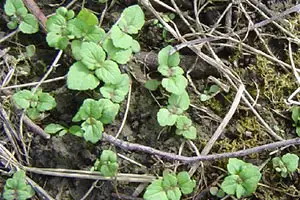
Scrambling speedwell seedlings.
This weed is generally quite easy to kill with cultivation and isn't as prostrate as the other speedwells so is likely to be picked up by a mower.
Even though it is a relatively small annual weed, it can tolerate a number of different herbicides. Both MCPA and 2,4-D do a poor job of killing it. Likewise, it is tolerant of trifluralin, dicamba and clopyralid, which is why it can dominate within brassica crops. It is also resistant to diuron, a commonly used residual herbicide in fruit crops.
There are many herbicides that do control it, such as a mecoprop/ioxynil mix in cereals (Image), or herbicides based on diflufenican, while in orchards glyphosate, paraquat or simazine will control it.
If scrambling speedwell is causing problems in brassica crops, there aren't really any good post-emergence treatments. Paddocks known to have high speedwell seed banks from past seasons should have brassica crops planted with the pre-emergence herbicide clomazone (Magister).
Similar species
Chickweed
Chickweed scrambles along the ground, has little white flowers, and a single line of hairs on the stem.
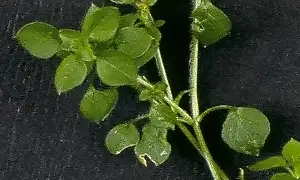
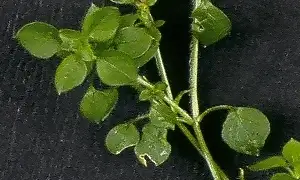
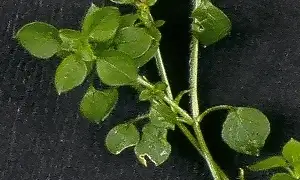

Scrambling fumitory
Scrambling fumitory is a clambering annual weed that produces clusters of pink flowers.
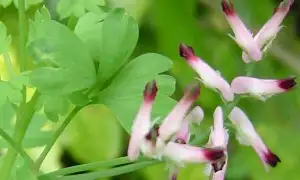
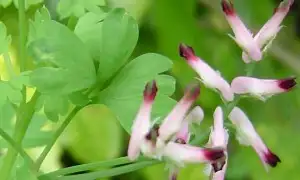
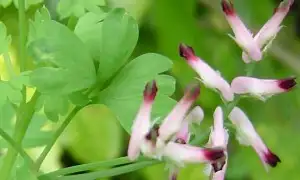
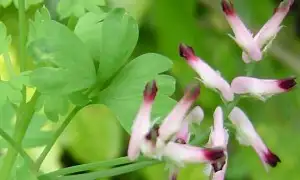
Turf speedwell
Turf speedwell is a small perennial weed that grows along the ground and produces white flowers.
